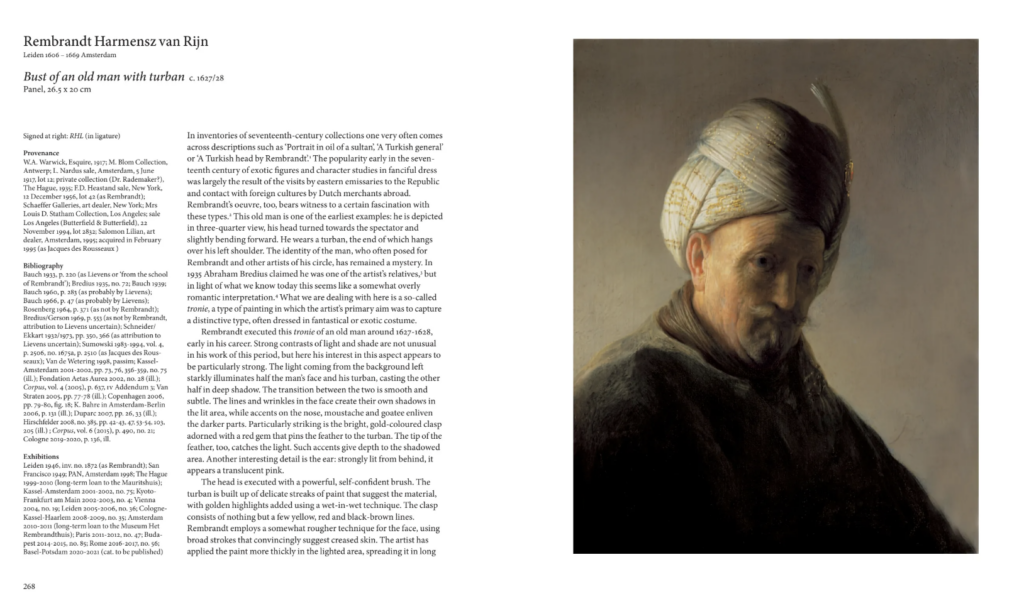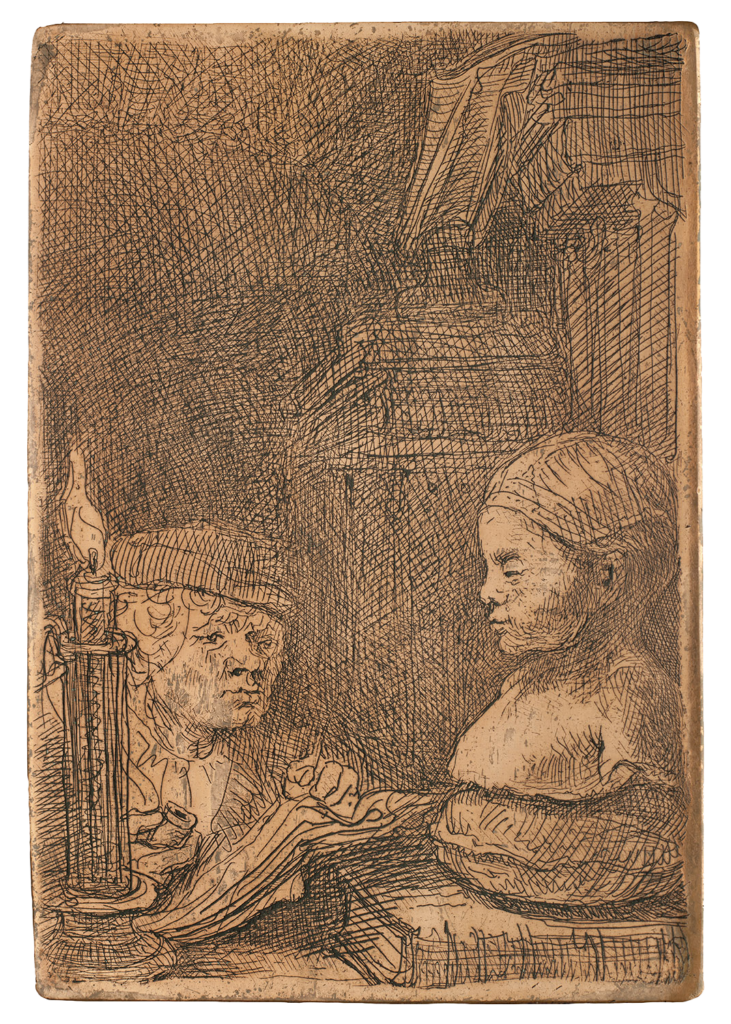Rembrandt Harmensz. van Rijn
Bust of an old man with turban
Bust of an old man with turban was executed around 1627-28 and is really a study of light, a subject that would fascinate Rembrandt all his life. Light falls directly on the left side of the face (colouring the ear pinkish) with its leathery wrinkled skin, the turban and tip of the feather. Indirect light (reflections off the wall) falls on the left side of the face and the clasp which fixes the feather to the turban. This last is a miracle of suggestion and consists of a few licks of white, yellow and red paint to create a ruby in a gold clasp! The cloak has volume, a clever combination of direct light on the back and indirect (reflected) light on the front. The identity of the man, who often posed for Rembrandt and other artists of his circle, has remained a mystery. Our work was re-attributed to the master in 1998 by the Rembrandt Research Project.


